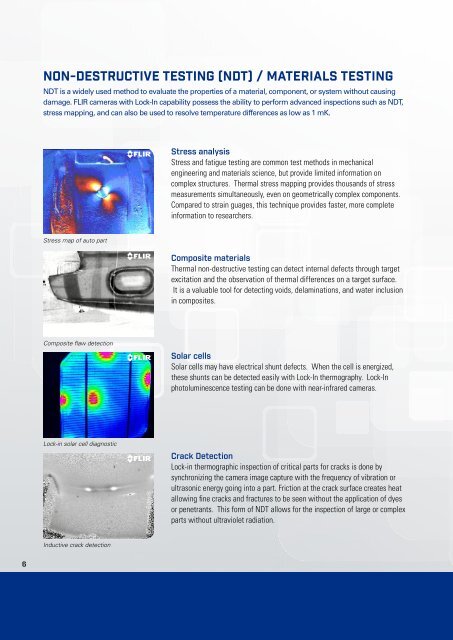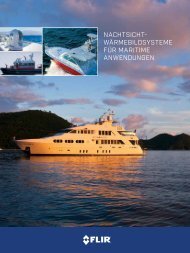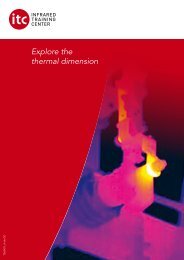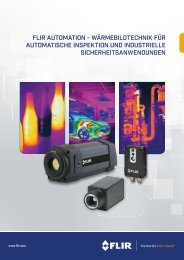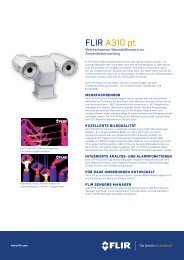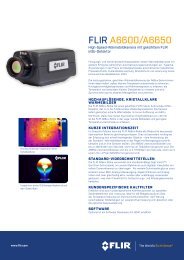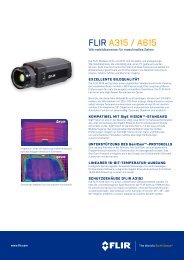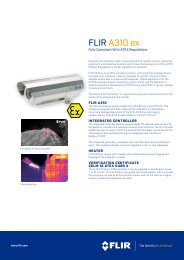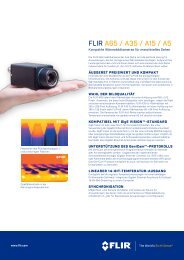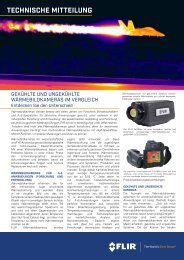Catalog Forschung und Entwicklung 2015 EN
Create successful ePaper yourself
Turn your PDF publications into a flip-book with our unique Google optimized e-Paper software.
NON-DESTRUCTIVE TESTING (NDT) / MATERIALS TESTING<br />
NDT is a widely used method to evaluate the properties of a material, component, or system without causing<br />
damage. FLIR cameras with Lock-In capability possess the ability to perform advanced inspections such as NDT,<br />
stress mapping, and can also be used to resolve temperature differences as low as 1 mK.<br />
Stress analysis<br />
Stress and fatigue testing are common test methods in mechanical<br />
engineering and materials science, but provide limited information on<br />
complex structures. Thermal stress mapping provides thousands of stress<br />
measurements simultaneously, even on geometrically complex components.<br />
Compared to strain guages, this technique provides faster, more complete<br />
information to researchers.<br />
Stress map of auto part<br />
Composite materials<br />
Thermal non-destructive testing can detect internal defects through target<br />
excitation and the observation of thermal differences on a target surface.<br />
It is a valuable tool for detecting voids, delaminations, and water inclusion<br />
in composites.<br />
Composite flaw detection<br />
Solar cells<br />
Solar cells may have electrical shunt defects. When the cell is energized,<br />
these shunts can be detected easily with Lock-In thermography. Lock-In<br />
photoluminescence testing can be done with near-infrared cameras.<br />
Lock-in solar cell diagnostic<br />
Inductive crack detection<br />
courtesy Edevis<br />
Crack Detection<br />
Lock-in thermographic inspection of critical parts for cracks is done by<br />
synchronizing the camera image capture with the frequency of vibration or<br />
ultrasonic energy going into a part. Friction at the crack surface creates heat<br />
allowing fine cracks and fractures to be seen without the application of dyes<br />
or penetrants. This form of NDT allows for the inspection of large or complex<br />
parts without ultraviolet radiation.<br />
6


